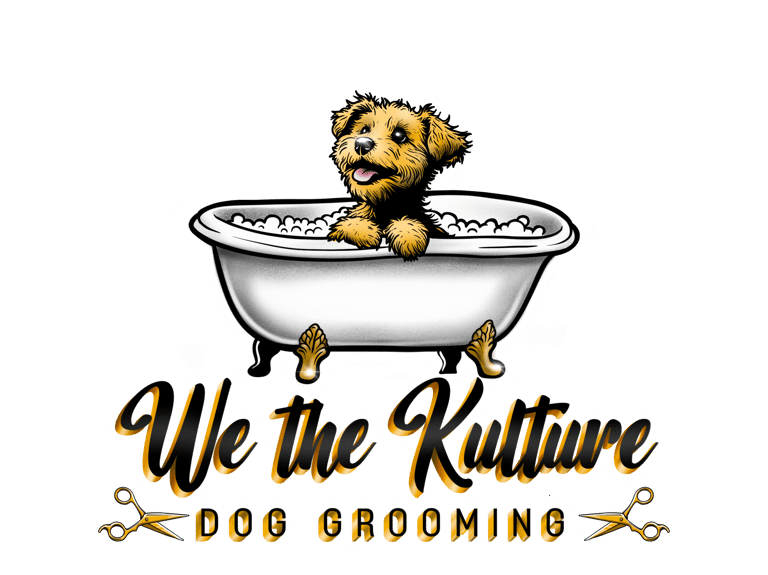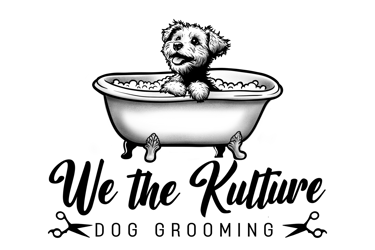DIY Between-Groom Touch-Ups
Keep your dog looking and feeling great between grooming appointments with these safe, simple at-home care tips from a professional groomer.
3 min read


Note: Some of the links on this site are affiliate links, which means I may earn a small commission if you click through and make a purchase. It doesn’t cost you anything extra, and I only share information I genuinely believe you’ll find helpful.
Introduction: Why Between-Groom Care Matters
Professional grooming keeps your dog looking and feeling their best, but what happens in the weeks between appointments can make a huge difference. A little at-home upkeep can help your dog stay cleaner, healthier, and more comfortable — and it can make the next grooming session easier for both your pup and your groomer.
The good news? You don’t need a full salon setup or years of training to make a big impact. With the right tools, a gentle approach, and a few minutes each week, you can keep your dog fresh without risking their safety.
Safe At-Home Grooming Tasks
These are the things you can confidently do at home without special training:
Brushing and Combing
Why it matters: Prevents mats, removes loose hair, and distributes natural oils for a healthy coat.
How often:
Long or curly coats: daily or every other day
Short coats: once or twice a week
Pro tip: Always brush in the direction of hair growth and check trouble spots like behind the ears, under the legs, and around the tail.
Wiping Paws and Face
Why it matters: Removes dirt, allergens, and bacteria your dog picks up outside.
How to do it: Use a damp cloth or pet-safe grooming wipes. Pay attention to between the toes and under the chin.
Cleaning Ears
Why it matters: Prevents wax buildup and infections.
How to do it: Use a vet-approved ear cleaner and cotton pads (never cotton swabs inside the ear canal).
Warning: If you see redness, swelling, or smell a foul odor, skip cleaning and call your vet.
Brushing Teeth
Why it matters: Dental health affects overall health — and bad breath.
How to do it: Use a dog-specific toothbrush and toothpaste (never human toothpaste). Start slow and reward your dog for cooperation.
Tools You Should Have at Home
You don’t need a full grooming arsenal, but these basics will make upkeep easier:
Slicker brush or pin brush (depending on coat type)
Metal comb for detecting hidden mats
Grooming wipes or a soft cloth
Nail file or emery board for smoothing sharp edges after trims
Dog-safe ear cleaner
Dog toothbrush and toothpaste
Detangling spray for long or curly coats
What NOT to Attempt at Home
Some grooming tasks are best left to the pros to avoid injury or coat damage:
Full Haircuts: Without training, it’s easy to nick the skin or create uneven results.
Deep Mat Removal: Mats close to the skin can hide sores and require careful handling.
Ear Plucking: Can cause irritation or infection if done incorrectly.
Anal Gland Expression: Should only be done by a groomer or vet.
A Quick Freshen-Up Routine
Here’s a simple 10-minute weekly routine that can make a big difference:
Brush the coat to remove loose hair and prevent tangles.
Wipe paws and belly after walks to remove dirt and allergens.
Check ears and eyes for any signs of irritation.
Brush teeth or offer a dental chew.
Give a quick once-over for lumps, bumps, or skin changes.
Pro Tips for Nervous Dogs
Keep sessions short and positive.
Use treats and praise to build trust.
Start with areas your dog enjoys being touched, then work toward more sensitive spots.
If your dog resists strongly, stop and try again later — forcing it can make them more anxious.
How At-Home Care Helps Your Groomer (and Your Dog)
When you maintain your dog’s coat between visits:
Grooming appointments are faster and less stressful.
Your dog avoids painful mat removal.
The groomer can focus on styling and finishing touches instead of damage control.
Your dog stays more comfortable year-round.
Between-groom care isn’t about replacing professional grooming — it’s about working as a team with your groomer to keep your dog healthy, happy, and looking their best. A few minutes a week can save you time, money, and stress, and your dog will thank you for it.
If you’re not sure which tools or products are right for your dog’s coat type, ask me at your next appointment. I'm always happy to point you in the right direction.


